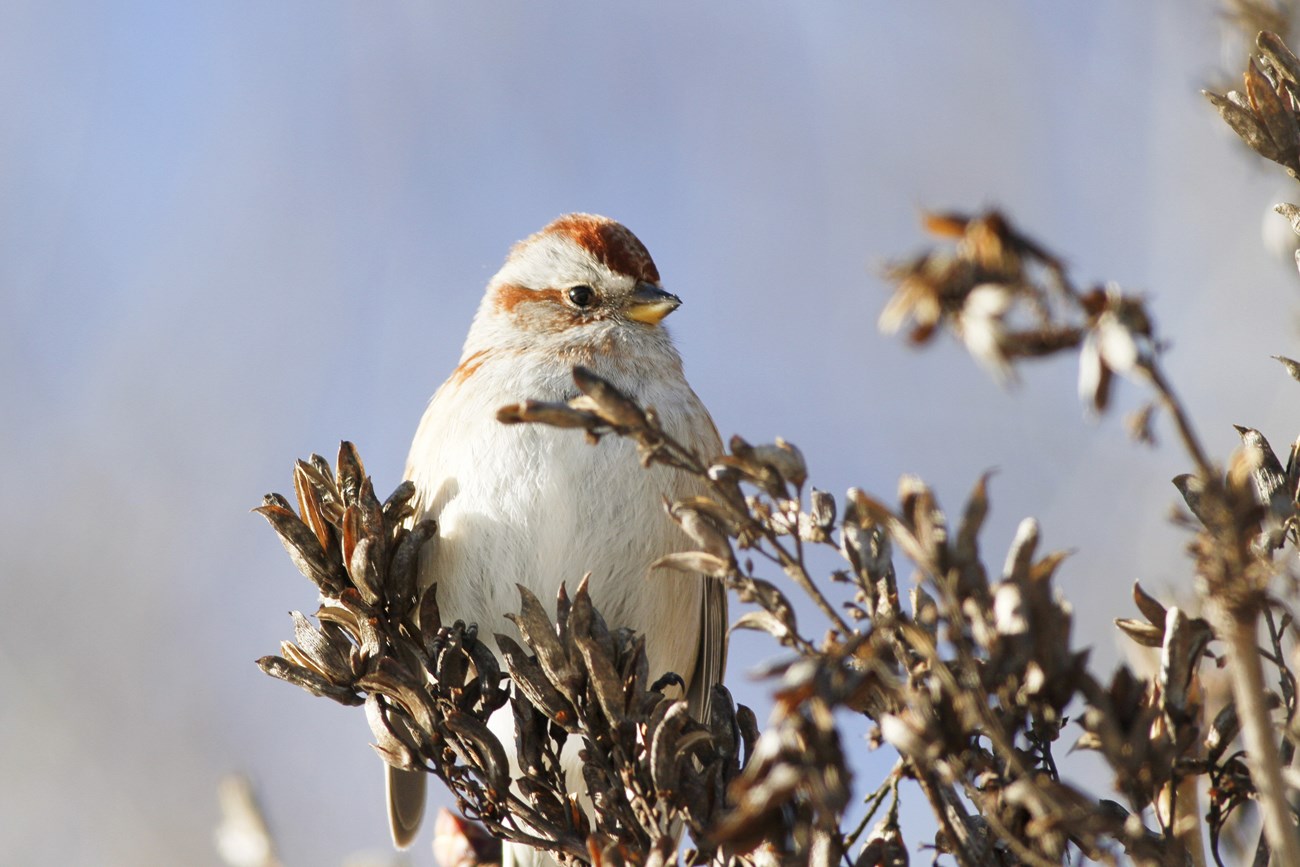Last updated: January 4, 2023
Article
Research Shows a Decline in Acadia National Park's Winter Bird Populations
Acadia National Park’s winter bird populations have declined by nearly half since 1971, according to a study published today in the journal Northeastern Naturalist.
Researchers with Schoodic Institute at Acadia National Park analyzed bird observations collected as part of the National Audubon Society’s Christmas Bird Count, one of the nation’s longest-running citizen science projects. Observations from in and around Acadia National Park on Mount Desert Island and the Schoodic Peninsula show a 43 percent reduction in the total number of birds observed in the last fifty years.
Researchers with Schoodic Institute at Acadia National Park analyzed bird observations collected as part of the National Audubon Society’s Christmas Bird Count, one of the nation’s longest-running citizen science projects. Observations from in and around Acadia National Park on Mount Desert Island and the Schoodic Peninsula show a 43 percent reduction in the total number of birds observed in the last fifty years.

Photo by Kyle Lima, Schoodic Institute
Both resident and migratory species have declined, including some of the most common birds, such as common eiders and long-tailed ducks. Of 162 species recorded during these winter counts, 42 species decreased in abundance.
While there are now fewer birds overall, 33 species showed increasing abundance. “Birds are shifting their home ranges and chasing their suitable habitat as conditions change,” said Lima. “Species that are common to our south are becoming more common here. For example, the northern cardinal has been increasing steadily since the 1970s, when they were uncommon.”

Photo provided by Schoodic Institute
Peregrine falcons, though not typically winter residents, are one of the species exhibiting an increasing trend in the Christmas Bird Count study, first appearing in 1992.
Schoodic Institute scientists Nick Fisichelli, Seth Benz and Peter Nelson also contributed to the new analysis, as well as long-time Christmas Bird Count compiler and retired National Park Service ranger Bill Townsend.
“This work would not have been possible without Bill, Michael Good, and other count compilers who led the efforts, and the more than 50 community volunteers. Together, they have spent numerous hours out in frigid temperatures counting birds in the middle of winter,” said Schoodic Institute bird ecology director Seth Benz. “This long-term effort has required a long-term commitment, but without it we would not be able to know that winter bird populations have shown alarming decreases.”

Photo provided by Schoodic Institute
“Citizen science projects are contributing to an extremely valuable knowledge library that we can reference in the future, when today becomes the past,” said Benz.
The Christmas Bird Count is an example of the importance of both long-term monitoring and public participation in science. The changes documented in this current study align with other research showing shifts in plant and animal populations in the Acadia region, such as the Landscape of Change project, which found a changing diversity of birds and insects over the last 140 years. These studies are made possible by Acadia’s long legacy of volunteers contributing knowledge of the changing world.
The 123rd Audubon Christmas Bird Count is happening nationwide through January 5, 2023. Find a count near you and get involved today at audubon.org.
About Schoodic Institute
Established in 2004, Schoodic Institute at Acadia National Park is a nonprofit organization and Acadia National Park’s primary partner in science and education. Based at the largest of 17 National Park Service Research Learning Centers in Winter Harbor, Maine, in Wabanaki homeland, Schoodic Institute’s focus is understanding environmental change taking place in Acadia and beyond, and helping managers of parks and other protected areas respond and adapt to change while engaging people of all ages in science. Learn more at schoodicinstitute.org.
